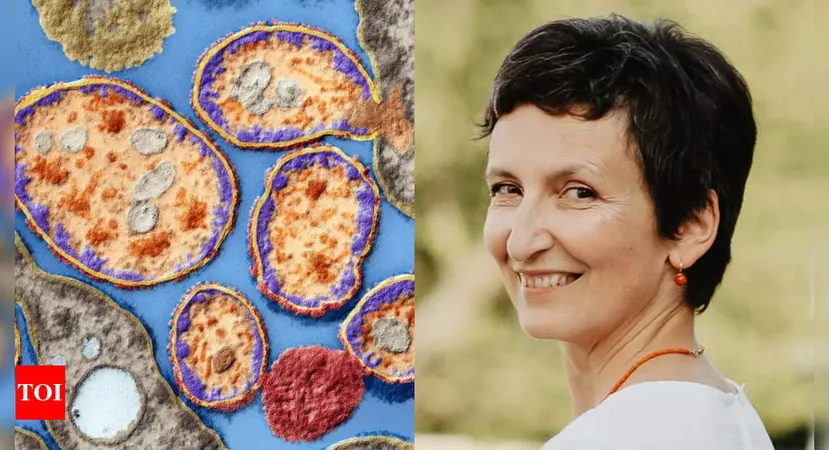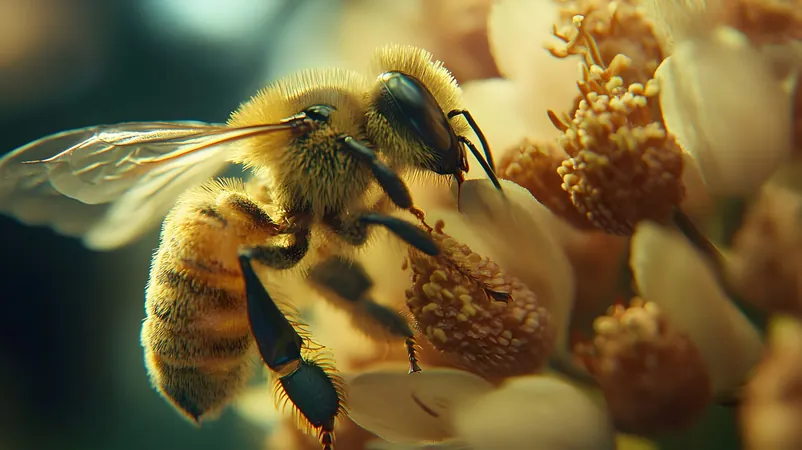
Bold Cancer Survivor: Scientist Treats Her Own Tumor with Lab-Grown Viruses
2024-11-10
Author: Ming
Introduction
In a groundbreaking and unconventional approach, Croatian virologist Beata Halassy, 49, faced her battle with breast cancer head-on by self-administering a treatment involving lab-grown viruses. This daring initiative, known as oncolytic virotherapy (OVT), reportedly shrank her tumor and facilitated a successful surgical removal. Now, Halassy is proud to share that she has remained cancer-free for four years, though her unique case has ignited a fierce ethical debate surrounding self-experimentation in medicine.
Halassy's Journey
Halassy's journey began in 2020 when she experienced a second recurrence of breast cancer at the site of a previous mastectomy. Faced with the daunting prospect of undergoing another round of chemotherapy, she decided to take an unorthodox path. Published in the peer-reviewed journal ‘Vaccines’, her case study documented her self-administered OVT as a treatment for her stage 3 cancer, showcasing the lengths she was willing to go to reclaim her health.
Emerging Treatment of OVT
This emerging treatment leverages the power of viruses to selectively target and eliminate cancer cells while simultaneously provoking the body's immune system to engage in the fight against the malignancy. While many OVT clinical trials have focused on late-stage cancers, recent initiatives have begun exploring its efficacy in early-stage disease. In fact, T-VEC, one variant of OVT, has gained approval in the U.S. for metastatic melanoma, yet there are currently no approved OVT agents for breast cancer globally.
Halassy's Methodology
Halassy, a researcher at the University of Zagreb, relied on her expertise in virus cultivation and purification, believing her knowledge equipped her for such a bold treatment. With careful preparation, she opted to inject her tumor with two different viruses: a strain of the measles virus followed by a vesicular stomatitis virus (VSV). These viruses not only have historical safety records but are also known to infect the type of cells present in her tumor. Notably, the measles strain employed is commonly used in childhood vaccinations, and the VSV typically induces mild influenza-like symptoms.
Treatment Process and Results
With the help of a colleague, Halassy received a series of injections using research-grade materials over a two-month period. Her oncologists monitored her progress and agreed to pivot to conventional chemotherapy should her condition worsen. Fortunately, the treatment proved to be effective; the tumor shrank significantly, becoming softer and detaching from surrounding muscle and skin, thereby allowing for a successful surgical removal.
Post-Surgery Analysis
When the tumor was analyzed post-surgery, it exhibited substantial infiltration by immune cells, indicating that the OTV had activated her immune response against the cancer. Halassy herself noted, "An immune response was, for sure, elicited." Following the surgery, she continued with a year’s treatment of trastuzumab, an anticancer drug, to ensure her recovery.
Ethical Considerations
Despite her success, Halassy acknowledges the ethical complexities surrounding self-treatment. She faced numerous rejections from academic journals when trying to publish her findings, with concerns primarily centered around potential ethical implications. Jacob Sherkow, a researcher focused on the ethics of self-experimentation, emphasized the risks of inspiring others to pursue similar treatments outside conventional medical guidance, particularly in vulnerable cancer patients.
Skepticism from Experts
Skepticism surrounding her methods was voiced by specialists like Stephen Russell, who agreed Halassy’s results were significant but noted that researchers are already investigating OVT for earlier-stage cancer. He indicated that the unique aspect of her case lies in her self-administrated treatment with a virus she cultivated herself.
Conclusion
Halassy's endeavors and her subsequent survival serve as a poignant reminder of the innovative, albeit controversial, paths some scientists may take when faced with their own health crises. Her story not only sheds light on the possibilities of emerging cancer therapies but also raises critical ethical questions about the balance between scientific exploration and patient safety in contemporary medicine. As more research unfolds, it will be essential to weigh the insights gained from such daring self-explorations against the potential risks to patients seeking hope in innovative treatments.

 Brasil (PT)
Brasil (PT)
 Canada (EN)
Canada (EN)
 Chile (ES)
Chile (ES)
 España (ES)
España (ES)
 France (FR)
France (FR)
 Hong Kong (EN)
Hong Kong (EN)
 Italia (IT)
Italia (IT)
 日本 (JA)
日本 (JA)
 Magyarország (HU)
Magyarország (HU)
 Norge (NO)
Norge (NO)
 Polska (PL)
Polska (PL)
 Schweiz (DE)
Schweiz (DE)
 Singapore (EN)
Singapore (EN)
 Sverige (SV)
Sverige (SV)
 Suomi (FI)
Suomi (FI)
 Türkiye (TR)
Türkiye (TR)